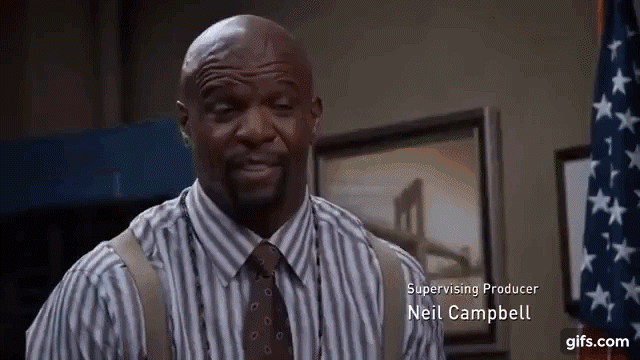Douglas Adams, Dirk Gently’s Holistic Detective Agency, 1987
Policy comms can get mired in its own complexity
The grand interconnectedness of all things. This credo, which guides Dirk Gently’s approach to detective work, reminds me of our work in policy research.
We know what the problem is. We know what might be causing it. But we can’t solve it because there are too many other things that require untangling before we can proceed with our initial goal.
When it comes to policy communications, we are not so much performing the role of a private investigator but rather their sidekick (Doctor Watson, if you wish) frantically trying to tell the complex story to the world. We have to give the audience enough information to guide them through this complex thread, but not too much as to overwhelm them with detail.
It is a difficult balance to strike.
Troubled by nuance, policy comms often gets trapped in the web of causality that slips into jargon and long-winded sentences.
This might come from the fear of inaccuracy. But it also comes with the greater risk of not being able to create action even with a groundbreaking piece of research.
How do we untangle this knot?
Brevity is a skill communicators must master

“140 characters is far more than anyone needs to make a point”. Ten years ago that could have been Twitter’s tagline. But increasingly Twitter has compromised for its users: bumping character limits up to 280, supporting threads, and now the anticipated launch of Twitter notes. All allow its users to write longer-form without linking out and away from the platform.
Because the truth is, being concise is often more difficult than writing about a topic at expansive length.
Brevity requires time, confidence, creativity, language wit and familiarity with the audience and the topic. Most importantly, it requires the ability to break down an argument and lead the audience through your complex thread.
Being concise is often more difficult than writing about a topic at expansive length.
In our everyday conversations we tend to be more energy-efficient. We choose linguistic shortcuts based on our environment, mental frames, and our presuppositions or previous knowledge about the topic. We can respond to questions in unfinished sentences and evoke actions with a single word (if someone shouts ‘Fire!’ or ‘Danger!’ next to us, we would know how to react). As Dan Slobin put it:
“Language evokes ideas; it does not represent them. Linguistic expression is thus not a straightforward map of consciousness or thought. It is a highly selective and conventionally schematic map. At the heart of language is the tacit assumption that most of the message can be left unsaid, because of mutual understanding (and probably mutual impatience).”
In policy comms, language is often treated as heavy weight machinery that squeaks at every turn. The more you say the more you have to say to clarify disputable signifiers and prevent meaning slip-ups.
However, whether the statement is true or false does not necessarily depend on the amount of detail. If someone were to ask us “Are you going out?”, we wouldn’t hesitate to venture a reply: “No, it is raining.” Most would assume that this connection is obvious for the receiver. So, we save our breath instead of giving the full reply: “I am not going out because it is raining outside and I will get wet.”
Find the short-hands that help, not hinder
Shortness doesn’t have to undermine the long-lasting effect that your story can produce.
This was exemplified at the height of the Covid pandemic by the UK’s Deputy Chief Medical Advisor Sir Jonathan Van-Tam. His use of metaphor to explain complex theories of virology and immunology to the British public became well-known.
For example, by comparing controlling the R rate to opening a box with a spring inside, he was able to capture the need for caution and control without getting into the ins-and-outs of transmission, infection susceptibility, and herd immunity thresholds.
Leaving things out does not mean that your audiences will not understand. It means that you are operating within the realm of the familiar, using all of the functions that language has to offer but also accepting the fact that we simply cannot say everything. When we try to say everything, our audiences tune out and we may as well be saying nothing.
By obscuring the issues, we forget that policies have real-life implications. That policies are not above people, they are for them.
No matter how complex your topic is, there is always a way to engage your audience. When we talk to kids, we find ways to explain the world in a simple manner. When we talk to friends, we find ways to explain what our work entails. Why would we take a different approach to policy comms?
By obscuring the issues, we forget that policies have real-life implications. That policies are not above people, they are for them. This means that there should always be a way to connect with each other. We just have to switch from broadcasting to having a conversation, and recognise that the research is there to support our arguments not speak for them as self-evident.
How to get started:
- Become a better reader: Pay attention to the content you consume. What makes you lean in or pause? You will learn about how and why a piece engages, and how the author has prioritised effectively.
- Summarise first, expand later: If you outline the main thrust of your argument first – the ‘key take-aways’ – your long-form piece will be way more focused and targeted, even as you expand on the necessary detail.
- Cut the jargon: “We can see jargon as a type of failed communication: the speaker addresses us, but doesn’t do the work to make themselves understood,” my colleague Tom says. Jargon can provide helpful shortcuts among like-minded people, but it excludes many others who need to know in turn. Understanding what these reasons are can help you reduce the buzzwords, and instead find shortcuts and figures of speech that help not hinder.
If you need help implementing this in your organisation, we can help. Get in touch.
Image credit: Ramon Kagie on Unsplash.





